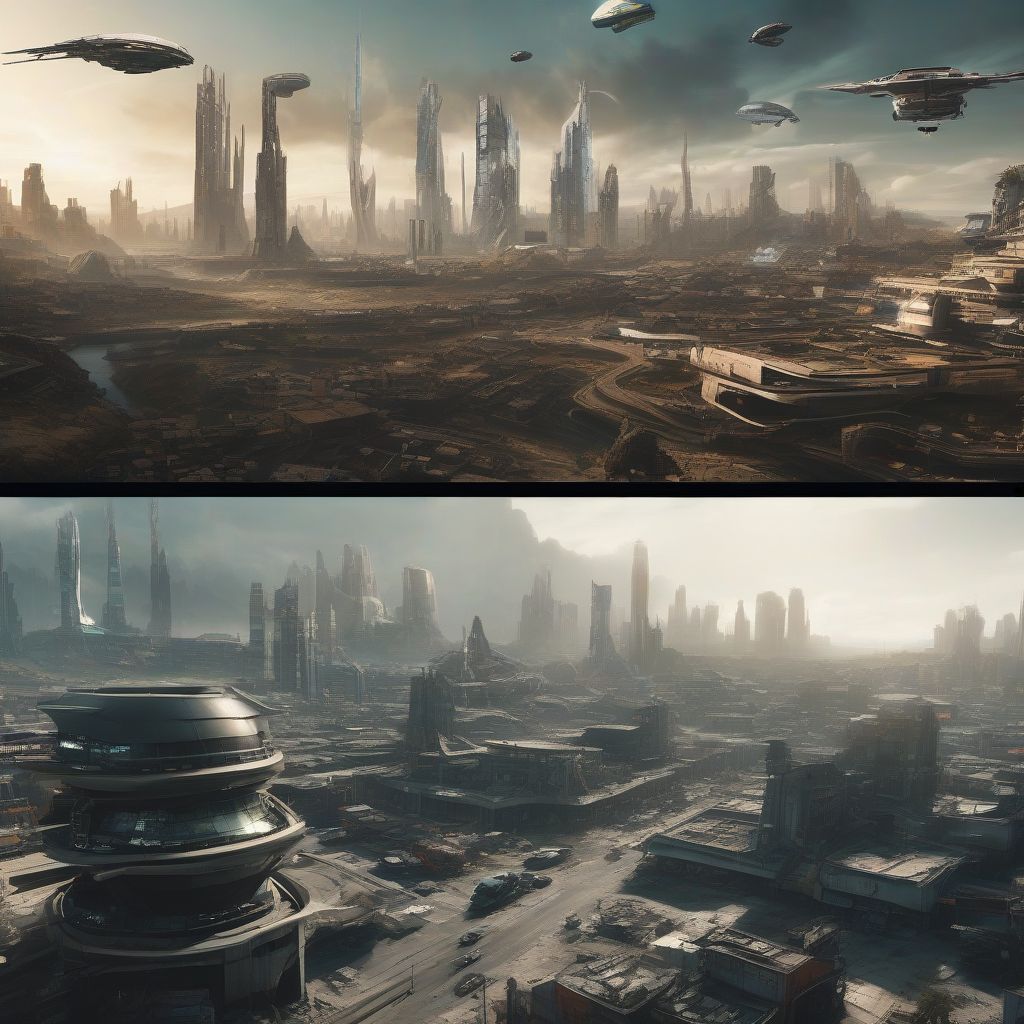Have you ever found yourself glued to a science fiction film, mesmerized not just by the story but by the sheer visual spectacle of it all? That, my friend, is the power of cinematography at work. It’s the art of capturing those breathtaking shots of alien landscapes, futuristic cities, and mind-bending special effects that transport us to another world.
But appreciating cinematography in science fiction goes beyond just marveling at the pretty pictures. It’s about understanding how the camera angles, lighting, and composition all work together to tell a story, evoke emotions, and immerse us deeper into these imaginative universes. So, buckle up as we embark on a journey to unlock the secrets behind the lens and discover how to truly appreciate the art of cinematography in science fiction films.
Seeing Beyond the Stars: Key Elements of Cinematography
Before we dive into the specifics of science fiction, let’s break down some fundamental elements of cinematography that apply to all films:
1. Framing the Future: Composition and Shot Selection
Imagine you’re the director. You’re not just pointing the camera; you’re carefully composing each shot like a painting. You decide what elements to include, where to place them, and how much of the frame they occupy.
- Wide shots: These establish the setting, showing us the vastness of space or the intricate details of a futuristic city. Think the awe-inspiring opening shot of “Blade Runner” (1982) with its sprawling cityscape.
- Close-ups: These bring us closer to the characters, revealing their emotions and reactions to the extraordinary events unfolding. Consider the iconic close-up of Roy Batty in the rain as he delivers his “Tears in Rain” monologue.
- Low-angle shots: Used to make characters appear powerful or imposing, like Darth Vader towering over his enemies.
- High-angle shots: Can make characters seem vulnerable or insignificant, perhaps emphasizing the vastness of space or the power of an advanced civilization.
2. Painting with Light and Shadow: The Art of Lighting
Lighting is crucial for setting the mood and atmosphere. Is your film a brightly lit space opera full of hope, or a shadowy noir thriller set in a dystopian future?
- High-key lighting: Often seen in optimistic science fiction, with bright, even lighting and minimal shadows. Think “Star Trek” (2009).
- Low-key lighting: Common in darker, more suspenseful films, using deep shadows and contrast to create a sense of mystery or dread. “Alien” (1979) is a masterclass in this.
3. A Symphony of Movement: Camera Movement
The camera isn’t always static; it moves with the action, guiding our eyes and influencing how we perceive a scene.
- Tracking shots: Following a character as they move through their environment, immersing us in their perspective. The speeder bike chase in “Return of the Jedi” (1983) is a prime example.
- Dolly shots: Moving the camera closer or further from the subject, often used to heighten tension or create dramatic reveals.
- Crane shots: Sweeping shots from high above, often used to establish a sense of scale or grandeur.
 Cinematography in Science Fiction
Cinematography in Science Fiction
Science Fiction: Where Imagination Knows No Bounds
Now that we’ve covered the basics, let’s explore how these techniques are uniquely employed in science fiction films to create unforgettable cinematic experiences:
1. Building Worlds Beyond Our Own: Production Design and Visual Effects
Science fiction often takes us to places beyond our wildest dreams, requiring incredible production design and visual effects to create believable alien planets, futuristic cities, and mind-bending technology.
- “2001: A Space Odyssey” (1968): This groundbreaking film set a new standard for realism in science fiction, with its meticulously crafted spacecraft, awe-inspiring depictions of space travel, and groundbreaking special effects.
- “Blade Runner” (1982) and “Blade Runner 2049” (2017): Both films are renowned for their gritty, rain-soaked vision of a future Los Angeles, blending practical sets with stunning visual effects.
2. Exploring Humanity’s Future: Themes and Visual Storytelling
Science fiction often grapples with big questions about humanity, technology, and our place in the universe. Cinematography can be a powerful tool for visually representing these themes.
- Color palettes: Warm tones might signify hope or advancement, while cold, sterile blues and grays could indicate a dystopian future.
- Costume and makeup: Think about the iconic white costumes in “Gattaca” (1997), representing genetic purity in a future obsessed with perfection.
3. Masterful Examples: Directors Who Shaped the Genre
- Stanley Kubrick (“2001: A Space Odyssey”, “A Clockwork Orange”): Known for his innovative use of wide-angle lenses, long takes, and classical music to create a sense of awe and unease.
- Ridley Scott (“Alien”, “Blade Runner”): A master of atmosphere and visual storytelling, using light and shadow to create tension and suspense.
- Denis Villeneuve (“Arrival”, “Blade Runner 2049”): Known for his breathtaking visuals, often collaborating with cinematographer Roger Deakins to create stunning, immersive worlds.
[amazon bestseller=”science fiction cinematography”]
Our Cinematic Journey Concludes
Appreciating cinematography in science fiction opens up a whole new level of enjoyment. It allows us to see beyond the special effects and appreciate the artistry and craftsmanship that goes into creating these immersive and thought-provoking films. So, the next time you’re watching a science fiction film, pay close attention to the way it’s shot. You might be surprised at what you discover.
What are some of your favorite science fiction films with stunning cinematography? Share your thoughts and observations in the comments below!
